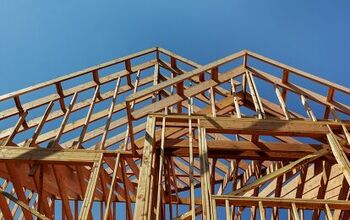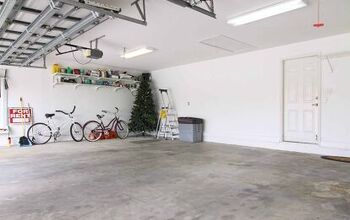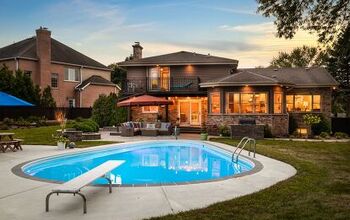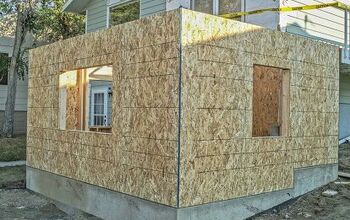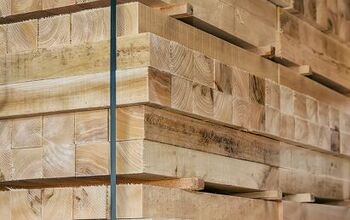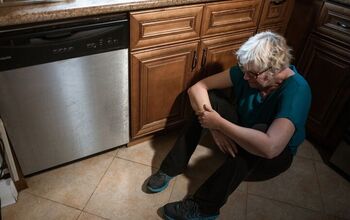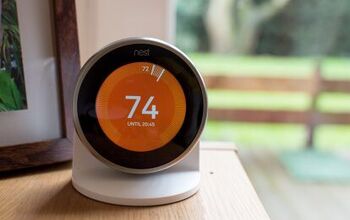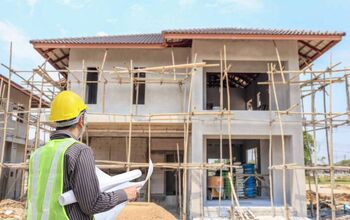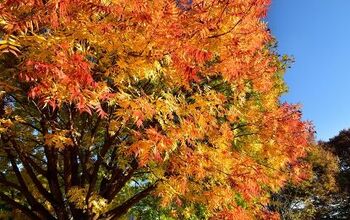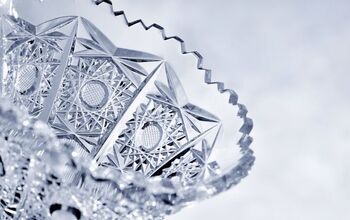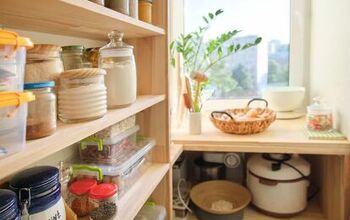Do Pressure Washers Use A Lot Of Water?

Countless homeowners use a pressure washer to clean their their driveway, deck, exterior walls, and even outdoor furniture. It’s simply the easiest way to make your home and driveway look like new, but some people worry about water consumption. So, do pressure washers use a lot of water?
Pressure washers use plenty of water, but they’re more efficient than garden hoses. That’s because a garden hose uses up to 24 gallons per minute (GPM), whereas a power washer uses 2-4 GPM. You can save water if you choose a wider pressure washer nozzle and work in small sections, so you don’t have to backtrack.
Pressure washers are far less wasteful than you may assume, especially when you consider how infrequently people use them. After all, you’ll probably use your garden hose more often than a pressure washer. Follow along as we explore everything you need to know about pressure washers and water consumption.
How Much Water Does A Pressure Washer Use?
Pressure washers use a lot of water, which leaves some homeowners apprehensive about using them. However, they use much less water than you may assume, as they typically max out at 4 gallons per minute (GPM). Some pressure washers even run at 2 GPM, which is barely more than a modern toilet flush.
However, the high pressure and intense performance make it seem as if a pressure washer uses more water than they actually do. You must also consider how efficient a pressure washer is, which means the water gets put to good use. A pressure washer has a precise nozzle, which help ensure that all the water goes where it needs to.
Precise and highly pressurized, you don’t need to run a pressure washer for as long as a garden hose. For example, you can pressure wash a driveway in as little as 45 minutes to 2 hours. Most people only occasionally use a pressure washer, and homeowners find the water expense worthwhile.
Do Pressure Washers Use More Water Than A Hose?
Pressure washers often use less water than traditional hoses. Hoses run continuously, whereas people use a pressure washer occasionally and in short bursts. This is especially true when considering people using a garden hose to fill their pool, which can take up to 20,000 gallons.
Some people clean their houses with a garden hose, but it takes much longer than a pressure washer. Garden hoses don’t have enough pressure to remove grime and stubborn stains. Because of that, many people run their garden hose for a long time, wasting many gallons of water.
Conversely, a pressure washer yields fast results, and you don’t need to run it constantly. You may expel 2 to 4 GPM with a pressure washer, whereas a garden hose can use up to 10 GPM. That’s why it’s worth the cost of renting or buying a power washer for routine exterior home maintenance.
How To Save Water When Using A Pressure Washer
While pressure washers aren’t as wasteful as you may think, it’s still important to do your best to save water when using one. After all, utility rates have increased throughout the United States, and most people would do anything to save money. You can save water when using a pressure washer if you follow a few key steps, such as:
1. Plan Ahead
The last thing you should do is pressure wash your home or driveway without a plan. Doing so makes it much easier to waste water and take longer than the job needs. Your best bet is to inspect the area you must pressure wash and think it over.
For example, you should pick one wall or section of the driveway and go from there. It’s also important to sweep and clean the area before you run the pressure washer. That way, you can wash a clear area, conserve water, and easily see where your house needs the most attention.
You can also split the job up across several days, weeks, or months. This is a great idea if you don’t want to increase your water bill too much. Otherwise, you can conserve plenty of water if you plan and stick to it.
2. Work In Small Sections
Zig-zagging across your exterior walls and driveway can waste time, water, and money. That’s why you must work in small sections to maximize efficiency. For example, you should pick one corner of your driveway to start and work your way down from there.
Pick a pattern that makes the most sense time-wise to ensure you don’t have to backtrack. Don’t move on to the next section until you’re happy with how the current section looks. Otherwise, you may walk back and forth too many times and use more water than you need to.
3. Be Careful With The Trigger
The easiest way to waste water with a pressure washer is to hold the trigger down for a long time. You should only hold the trigger down when cleaning a surface. It’s also important to figure out how close you must get to the surfaces to ensure maximum efficiency.
You can typically clean surfaces well if you keep the nozzle 12” away from the target. However, you may need to get as close as 6” away from the target for stubborn stains. You may inadvertently waste a lot of water if you hold the nozzle too far away from the target surface.
That’s because there may not be enough pressure to adequately remove stains. Never press the nozzle against your skin, or else you may suffer a serious injury. Read the instructions to check what the recommended nozzle distance is before you start washing surfaces.
4. Choose An Efficient Pressure Washer
Like anything else, you can find many types of pressure washers on the market. They often vary regarding pressure and water consumption. Many homeowners swear by pressure washers that run at 3 GPM, but it varies.
You can find pressure washers that run at as little as 1.5 GPM, but some people find them ineffective. Naturally, 4 GPM pressure washers consume more water, and that makes some people nervous. It’s important to do your homework and research several pressure washers, check their water rates, and read reviews.
Your options may be limited if you rent a pressure washer, as they may only have one or two to choose from. You can expect to spend around $250 to buy the average pressure washer, but it varies between $90 and over $1,000. Otherwise, you can rent a pressure washer for roughly $26 to $76 for 4 hours.
5. Adjust The Pressure And Nozzle
You must prioritize efficiency if you want to save water when using a pressure washer. It helps to pick the right nozzle and pressure for your needs. For example, many people use rotary nozzles because they’re good for many applications.
Conversely, zero-degree nozzles are quite concentrated and don’t cover too much ground. Narrow nozzles can waste water, as you’ll spend more time washing your driveway and exterior walls. However, 25 and 40-degree nozzles are ideal for a wider variety of pressure-washing tasks.
Set the pressure between 1,300 and 1,700 for light tasks, such as washing outdoor furniture. However, you must set the pressure to 1,700 to 2,400 for exterior walls, decks, and driveways. Read the manual to ensure you use the right nozzle and pressure settings.
Summing It Up
Garden hoses use up to 20 more gallons per minute than pressure washers. Pressure washers are especially efficient if you carefully plan the session and only press the trigger when you’re aimed at a surface. Carefully clean the area before you use your pressure washer to ensure the water solely goes toward removing stubborn stains.
Related Guides:

Nick Durante is a professional writer with a primary focus on home improvement. When he is not writing about home improvement or taking on projects around the house, he likes to read and create art. He is always looking towards the newest trends in home improvement.
More by Nick Durante

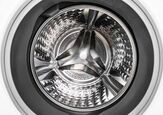
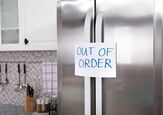









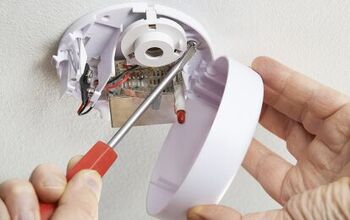
![The 10 Best Table Saws - [2022 Reviews & Buyer's Guide]](https://cdn-fastly.upgradedhome.com/media/2023/07/31/9070645/the-10-best-table-saws-2022-reviews-buyer-s-guide.jpg?size=350x220)
